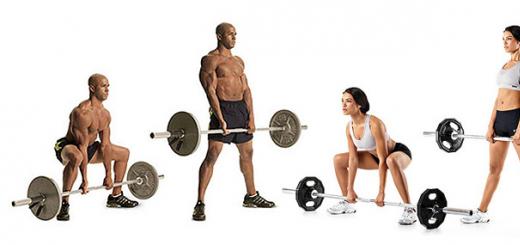The water level sensor in the conditions of modern technology performs the function of one of the human senses. The correct operation of the entire mechanism depends on how correctly it is possible to manage and control the state of the water flow. It is difficult to overestimate the importance of the reliability of the sensor device, if only because the device that controls water, as a rule, becomes the very "narrow" link in modern technology.
Design and principle of operation
Regardless of what principle of operation the device is based on, whether it works only in the signaling mode or simultaneously performs the functions of a watchman, automatic machine or control mechanism, the design of the device always consists of three main components:
- A sensing element capable of responding to the characteristics of the water flow. For example, the actual presence of water, the height of the column or the level in the tank, the fact of the movement of water flow in a pipe or line;
- A ballast element that balances the sensor part of the sensor. Without the ballast, the sensitive sensor would be triggered by the slightest jolt or the occasional drop of water;
- Transmitting or actuating part that converts the signal of the sensor mounted in the water sensor into a specific signal or action.
Approximately 90% of all water technology, one way or another, is connected with electric actuators - pumps, valves, heaters and electronic control machines. It is clear that such a device operating with water flows must be safe in the first place.
Of all signaling systems a sensor that monitors the state of water is considered the simplest and most affordable to set up and repair. Unlike sensors and devices that work with temperature, pressure or flow measurements, the water sensor is very easy to control using the simplest devices, or, in extreme cases, see the level or pumped flow with your own eyes.
Types of level sensors
One of the conditions successful work sensor is the high sensitivity of the sensor, the higher the better, the more accurately it is possible to read the controlled water parameter. Therefore, as the value measured by the sensor, they try to choose the one that changes the most during the measurement.
Today, there are about two dozen different methods and methods for measuring the mechanical characteristics of water, but all of them are used to obtain information:
- The height of the water column in the container or tank;
- The speed of the flow or flow of water;
- The fact of the presence or absence of water in a closed container, tank, pipe or heat exchanger.
Of course, industrial sensors can be quite complex structurally, but the principles of operation used in them are the same as in household, garden or automotive equipment.
Float type overflow sensor
The simplest way to measure the water level is with a simple mechanical design, consisting of a sealed float, a rocker or rocker, and a check valve. In this case, the float is the sensor, the spring and float weighting are considered the ballast, and the valve itself acts as the actuator.
In all float systems, the sensor or float is adjusted to a specific response height. The water that has risen in the tank to the control level raises the float and opens the valve.

The float system can be equipped with an electric actuator. For example, a magnet insert is installed inside the float sensor, when the water rises to the working level, the magnetic field causes the vacuum reed switch to close the contacts, and thereby turns on or off the electrical circuit.

The float sensor can also be implemented in a free circuit, as, for example, in submersible pumps. In this case, the reed switch closes not under the influence of the magnetic field of the liner, but only due to the pressure difference inside the pump housing and at the level of the float. Today, a magnetic float sensor with an electric actuator is considered one of the safest and most reliable options for monitoring the liquid level.
Ultrasonic sensor
The design of the water sensor provides for the presence of two devices - an ultrasound source and a signal receiver. The sound wave is directed to the surface of the water, reflected and returned to the receiver.

At first glance, the idea of using ultrasound to make a sensor for controlling the level or speed of water movement does not look very successful. The ultrasonic wave can be reflected from the walls of the tank, refracted and interfere with the operation of the receiving sensor, and in addition, sophisticated electronic equipment is required.

In fact, an ultrasonic sensor for measuring the level of water or any other liquid is placed in a box a little more than a pack of cigarettes, while using ultrasound as a sensor provides certain advantages:
- The ability to measure the level, and even the speed of water at any temperature, in conditions of vibration or movement;
- The ultrasonic sensor can measure the distance from the sensor to the water surface even in heavily polluted conditions with variable liquid levels.
In addition, the sensor can measure the level of water located at a considerable depth, while the measurement accuracy is 1-2 cm for every 10 m of height.
Electrode water control principle
The fact that water is electrically conductive has been successfully used to make liquid level contact sensors. Structurally, the system consists of several electrodes installed in a container at different heights and connected into one electrical circuit.
As the container is filled with water, the liquid closes a pair of contacts in series, which turns on the pump control relay circuit. As a rule, the water sensor has two or three electrodes, so the measurement of the water flow is too differentiated. The sensor signals only when the minimum level is reached and starts the pump motor, or when the tank is completely filled and turns it off, so such systems are used to control reserve or irrigation water tanks.
Capacitive type water sensor
Capacitive or capacitive type of sensor is used to measure the water level in narrow and deep tanks, it can be a well or a well. By using capacitive sensor it is possible to determine the height of the water column in the well with an accuracy of ten centimeters.
The sensor design consists of two coaxial electrodes, in fact a pipe and an internal metal electrode, immersed in the wellbore. Water fills part of the internal space of the system, thereby changing its capacity. Using the connected electronic circuit and the quartz oscillation coil, the capacitance of the sensor and the amount of water in the well can be accurately determined.
radar meter
A wave or radar sensor is used to work in the most difficult conditions, for example, if you need to measure the level or volume of liquid in a tank, an open reservoir, an asymmetric and irregularly shaped well.
The principle of operation does not differ from the ultrasonic device, and the use of an electrical pulse allows you to perform a measurement with great accuracy.
Hydrostatic sensor option
One of the variants of the hydrostatic sensor is shown in the diagram.
Note! A similar sensor is used in washing machines and boilers, where it is very important to control the height of the water column inside the tank.
The hydrostatic sensor is a box with an elastic spring-loaded membrane that divides the sensor body into two compartments. One of the sections is connected with a strong polyethylene tube with a fitting soldered into the bottom of the tank.
The pressure of the water column is transmitted through the tube to the membrane and causes the contacts of the starting relay to close, most often a pair is used to start the actuator - a magnetic insert and a reed switch.
Water pressure sensor
Hydrostatic pressure is determined when a flow or a certain volume of water is at rest. Most often, a hydrostatic sensor is used in heating and heating devices - boilers, heating boilers.

Water pressure sensor device
Such devices most often operate in trigger mode:
- At high pressure water sensor closes the relay contacts and allows the pump or heater to work;
- At low pressure even the physical possibility of turning on the actuator is blocked in the sensor, that is, no shocks or temporary surges in pressure will make the device work.
With a good water pressure sensor, the sensor will give a signal to start the motor only if the load on the bellows is maintained for more than three seconds.
A typical device of a "smart" sensor is shown in the diagram.
The sensitive element of the system is a diaphragm connected to the bellows, the central rod can rise and fall depending on the pressure, and thereby change the capacitance of the built-in capacitor.
Connecting the water pressure sensor
A simplified sensor model is used in home systems "hydroaccumulator - borehole pump". Inside the instrument is a box with a membrane connected to a rocker arm and two balancing springs.

The design is screwed onto the outlet fitting of the accumulator. With an increase in internal pressure, the membrane rises and opens the main pair of contacts so that the system responds properly to water pressure;
Water leakage sensor
Already from the name it becomes clear that we are talking about a device that detects the presence of water leakage from plumbing communications. The principle of operation of the device resembles an electrode system. Inside the plastic box, one or more pairs of electrodes are installed in a special pocket. In the event of an accident, water accumulating on the floor flows into the pocket and closes the contacts. The electronic circuit is triggered, and at the signal of the sensor, ball valves with an electric drive come into operation.

It is clear that the sensor, by itself, is a useless thing if used without a control system and automatic water cut-offs installed at the entrance to the house or on one of the branches of the water supply.
An example is one of the most popular protection systems - the Neptune water leakage sensor. The system includes three main blocks:
- The Neptune leak sensor itself is in wired or wireless modification, usually three separate sensors are included in the kit;
- Ball valve with electric drive, manufactured by the Italian company Bugatti, in the amount of two pieces;
- Control unit «Neptun Base».
The most valuable part of the kit is automatic taps, they are produced for installation on half-inch and inch pipe threads. The design withstands pressure up to 40 Atm., and the Italian quality of the drive guarantees at least 100 thousand opening and closing cycles.

The sensor itself looks like two brass plates in a box, to which a low-voltage voltage with a very high input resistance is connected, when the sensor is closed, the current is limited to 50 mA. The design itself is made according to the IP67 protocol, therefore it is absolutely safe for humans.

Installation of wireless water leakage sensors
In the Neptune system, the sensor can be removed from the control unit at a distance of more than 50 m. In more advanced NEPTUN PROW + wireless systems, water leakage sensors equipped with the WF module are used instead of a wire system.
The control unit is equipped with a channel protected from interference and moisture, a system for turning on and off ball valves. It is believed that no interference or accidental drops of moisture, condensate affect the operation of the sensors.

Boxes with a leakage sensor are installed at a distance of no more than 2 m from pipes; sensors cannot be shielded with metal plumbing or furniture.
Wireless water sensor
The design of a wireless meter is more complex than a conventional two-electrode wired version. A controller is installed inside, which continuously compares the current flowing between the electrodes with the reference value stored in the memory. In this case, the dry floor reference value can be set according to your own choice.

A very convenient solution, given that the humidity level in the bathroom can be very high, and regular condensation can lead to false alarms.
As soon as the controller determines the level corresponding to flooding, the water control device sends an alarm signal to the base unit. The most advanced models are able to duplicate the command with an SMS message over the GSM channel.
Water flow sensor
In many cases, for stable and trouble-free operation of equipment, a water presence sensor is not enough; information is required on whether the flow is moving through the pipeline, what is its speed and pressure. For these purposes, water flow sensors are used.
Types of water flow sensors
In household and the simplest industrial equipment, four main types of flow sensors are used:
- Pressure gauge;
- Petal sensor type;
- Blade measurement scheme;
- Ultrasonic system.
The older pitot tube design is sometimes used, but requires at least a clean and laminar flow of water to function reliably. The first three sensors are mechanical, so they are often subject to clogging or water erosion of the sensing element. The last type of sensor, ultrasonic, is able to work in almost any conditions.
The principle of operation of an ultrasonic meter can be understood from the diagram. Inside the tube is a wave emitter and a receiver. Depending on the flow velocity, the sound wave may deviate from its original direction, which is the basis for measuring the flow characteristics.
Device and principle of operation
The simplest petal flow sensors work on the principle of a rowing oar. A petal suspended on a hinge is immersed in the stream. The higher the flow velocity, the more the sensor lobe deviates.
More accurate paddle sensors use an impeller or impeller made of polyamide or aluminum alloy. In this case, it is possible to measure the flow velocity from the frequency of rotation of the moving element. The only drawback is the increased resistance created by the petals and blades in the water flow.

The pressure sensor works using dynamic flow pressure. Under the pressure of water, the movable element with a magnetic insert is squeezed upwards, thereby freeing up space for the movement of fluid. The reed switch installed in the head instantly reacts to the magnetic field of the insert and closes the circuit.
Application area
Water flow sensors are used exclusively in heating systems and automation systems of single-circuit heat exchangers. Most often, the failure of the flow sensor leads to burnout and severe damage to hot radiators and heaters.
DIY water level sensor
The simplest version of a device capable of signaling the filling of a tank or any other container with water is shown in the diagram below.
Structurally, the level detector consists of three metal electrodes mounted on a textolite plate. The circuit, assembled on a conventional low-power transistor, allows you to determine the maximum permissible upper and lower water levels in the tank.
The design is absolutely safe to use and does not require any expensive parts or control devices.
Conclusion
Water level sensors are widely used in household appliances, therefore, most often for the auxiliary needs of garage or garden equipment, ready-made designs from old equipment are used, redone and adapted to new conditions. With proper connection, such a device will last much longer than a home-made circuit.
In one of the articles I saw a variant of the scheme for automatically maintaining the water level in the storage tank proposed by one of the summer residents which, to be honest, alarmed me. This design has a number of disadvantages: it is difficult to manufacture, requires a certain level of skill when working with electronic components and is quite expensive - one transformer is worth something.
But its main drawback is the low level of electrical safety. In the event of a breakdown of the transformer insulation, the mains voltage through the sensor electrodes will enter the water and be transferred to the tank, which can lead to electric shock to people.
I propose in all respects a simple and very cheap version of the scheme for automatically maintaining the water level (see Fig. 1).
It consists of only one relay and two sensors. As the first component, it is necessary to use the on/off relay K1, and as the second component, the reed switches G1 (low water level sensor) and G2 (high water level sensor) located on a guide for a permanent magnet vertically installed outside the tank.
Moreover, the sensor G1 should be located above G2. The distance between them will correspond to the allowable difference between the upper and lower water levels in the tank. The sensors are triggered by a permanent magnet Q connected to a foam float located inside the tank on its guide. This connection can be made, for example, with a fishing line through a pulley mounted on the top of the tank.
A sketch of the device for automatically maintaining the water level in the storage tank is shown in Fig. 2. For information about the switched on position of the pump motor, the circuit has an LED indicator HL
The scheme works as follows. In the initial state (there is no water in the tank and the contact of the reed switch G1 is closed under the influence of the magnet), the relay K1 must be forced into a state in which its contact K1.2L and the contacts K1.3, K1.4 K1.5, K1 connected in parallel will be closed .6, K1.7, K1.8 and K1.9. The pump motor M will start to run and the LED indicator HL will light up to confirm this.
When filling the tank with water, the float rises and the contact of the sensor G1 opens.
When filling the tank to the upper level, the magnet moving down the guide acts on the G2 sensor, and then its contact closes. Relay K1 will switch, its contacts K1-2, K1.3, K1LK1.5, K1.6, K1.7, K1Li K1.9 will open, and contact K1.1, on the contrary, will close. And then the pump motor will stop and the LED indicator HL will turn off.
When the water level in the tank drops to the lower level, the float drops, and the magnet moving upwards along the guide acts on the G1 sensor and closes its contact. Relay K1 will switch to its original position, its contacts K1.2, K1.3, K1.4, K1.5, K1.6, K1.7, K1.8 and K1.9 will close.
The pump motor will start running again (and the HL LED will turn on accordingly). These cycles will repeat as long as voltage is applied to the circuit.
In fact, a lot of time was spent explaining how it all works. In fact, the whole device is simpler than a steamed turnip, and since there are no complex nodes in it, then it will work flawlessly and for a long time. And now about the materials and technical specifications removal components.
- As relay K1, I used a relay of the RP-9 type, rated for 220 V AC. You can also put RP-12 (also at 220 V), but with a high power of the pump motor, an intermediate contactor will have to be added to the circuit.
- As sensors G1 and G2, you can use any reed switches designed for a switching current of at least 100 mA.
- As an HL indicator, any indicators are suitable, for example, LED type SKL12 or AD22-22DS for 220 V.
- A segment of a plastic cable channel with a rectangular profile 10×15 mm can be used as a guide for the magnet.
- As a float, a piece of foam with a rectangular hole 12 × 17 mm in the center.
- A piece of plastic cable duct with a rectangular profile 10×15 mm can also be used as a guide for the float.
- As a magnetic element, you can use a magnet from a magnetic furniture latch, to which a strip of tin with a hole for fishing line is magnetized and glued.
- Sensors (reed switches) can be attached to the rail with ordinary adhesive tape.
- Fuses FU1 and FU1 of any type for a current of 5 A are used as protection elements.
- To de-energize the device circuit, a paired switch with contacts SA1 and SA2 is used.
The scheme of automatic maintenance of water in the storage tank
- Fig 1 (top). Schematic diagram of the device for automatically maintaining the water level in the storage tank.
- Fig 2. Sketch of the device for automatic maintenance of the water level in the storage tank.
Liquid is a substance that has the property of flowing and taking the shape of the vessel in which it is located.
Liquid level sensors are required to control the level of liquids in tanks or pipelines. By functionality, level sensors are divided into level gauges and signaling devices.
Interactive liquid level sensor selection
To get the best solution for your problem, fill out the questionnaire,
and our experts will contact you to offer a ready answer.
Liquid level sensors are divided into two types: contact (the entire sensor or part of it is in contact with the measured medium) and non-contact (measurement occurs without contact with the liquid medium). Each of these types has advantages and disadvantages and finds its application in a particular area.
Contact type sensors usually used in processes that have factors that impede the operation of the equipment.
These factors include:
- temperatures over +90°С;
- pressure over 3 bar.
Including mainly contact sensors are used to measure the level of foaming liquids (milk, beer, juices, gas, water, etc.). Due to signal scattering and incorrect results when measuring with a non-contact method, it is also recommended to control the liquid level in tall narrow tanks using contact devices.
They are used where it is necessary to avoid the harmful effects of the physical and chemical properties of the measured liquid. The measurement process and sensor performance can be affected by:
- viscous liquids (condensed milk, jam, petroleum products, glycerin, etc.);
- aggressive liquids (alkalis, acids).
All liquid level sensors differ not only in functionality (level gauges / signaling devices), type (contact / non-contact), but most importantly - in principle of operation.
| Level gauges | signaling devices | |
| Contact | capacitive | Capacitive/Capacitive Frequency (RF) |
| hydrostatic | hydrostatic | |
| Bypass | Optical | |
| Magnetostrictive | Vibrating | |
| Magnetic | Float magnetic | |
| Microwave reflex | Float cable | |
| Buoys | Conductive | |
| Ultrasonic | Ultrasonic | |
| Microwave radar | ||
| radioisotope |
You can find a detailed description of each principle of operation, their advantages and disadvantages on the pages of our website, in this article we will focus on the key differences and applications of a particular liquid level sensor.
Capacitive level sensors is an economical solution for level control where foaming and sticking of the medium to the sensor do not occur, and where high accuracy of level measurement is not required. Typically used to measure liquid levels in small tanks. For food products and aggressive media, models with a plastic coating of the measuring probe are recommended. A significant disadvantage is the high error in measuring liquids with low dielectric constant (ε=1.5…3.0), as well as the inability to work with dielectric liquids.
However, manufacturers have managed to solve the problem of detecting liquids with low dielectric constants and the problem of determining the interface between media with close values of the dielectric constant. A capacitive-frequency signaling device, unlike a capacitive one, thanks to RF technology and fine tuning, is able to detect weakly conductive liquids and at the same time not react to foam.
Hydrostatic level gauges and signaling devices have a higher measurement accuracy compared to capacitive and the same low cost. Therefore, they are the best choice in terms of price / quality ratio. The level value is calculated by measuring the pressure of the liquid column, therefore hydrostatic sensors are used in open tanks or in closed ones, but in which the air pressure corresponds to atmospheric pressure, otherwise the level gauge will give incorrect results. Including the determination of the level is affected by the density of the liquid, for the use of hydrostatic level gauges it is necessary to be sure that its value remains constant throughout the entire measurement time. Therefore, it is not recommended to use the hydrostatic level detection method for liquids with variable density (radiochemical production, oil products with temperature changes). They are used to control the level of clean and waste water, liquid food products or chemicals, do not react to foam. They are actually a non-alternative solution for measuring the liquid level in wells.
Work bypass level gauges is based on the principle of communicating vessels, which makes the measurement process very clear and understandable. Such level gauges are used in small pressurized tanks with working medium temperatures up to +250 °С. They can be used in conjunction with magnetostrictive level gauges, which will allow them to be integrated into the automated control system. Bypass level gauges should not be used with viscous liquids or liquids whose viscosity increases with decreasing temperature, since the temperature of the liquid in the bypass chamber due to thermal bridges in the connecting fitting is lower than in the vessel communicating with it.
Magnetostrictive and magnetic level gauges are of the float type, which means that the float "lies" on the surface of the liquid and the level is measured relative to the position of this float. Such level gauges are more accurate, especially magnetostrictive ones. It is advisable to use them in the commercial accounting of light oil products, chemicals and other expensive liquids. Float gauges are suitable for measuring the level of foamy liquids, but are not suitable for viscous liquids.
Microwave Reflex Level Gauges structurally consist of an electronic unit and a waveguide. The length of the waveguide must match the height of the tank, which limits the use of sensors in tall tanks. All sensors with a similar design (capacitive, magnetic, magnetostrictive) face such a disaster. However, the principle of operation and design of the reflex sensor makes it highly accurate and suitable for use in difficult conditions (high temperature and pressure), as well as with foaming and sticky liquids. This type of level gauge can be called the most versatile, suitable for use with virtually any liquid, regardless of the air pressure above the surface of the liquid or the dielectric constant of the medium.
Displacers These are sensors for difficult conditions, in which, among other things, high measurement accuracy is required. The principle of operation of displacer level gauges is similar to the operation of float sensors and is based on the use of Archimedes' principle. Some models are capable of providing unsurpassed measurement results at temperatures from -196 °C to + 500 °C and working pressures up to 414 atmospheres. This is where the high cost comes in. As a rule, they are used in oil storage facilities and in the chemical industry.
This is a universal device for continuous level measurement of liquids. It has all the advantages of a non-contact measurement method and is characterized by extremely high accuracy. Can be used with all liquid media, foam may be an exception in some cases. A pulse radar level transmitter can be interfered with by a gas cushion above the liquid surface, in which case FMCW radar level transmitters should be used. The best application of such sensors is in tanks with a slow change in liquid level, where high measurement accuracy is important. The disadvantage is their high cost.
Ultrasonic Level Sensors another non-contact type of sensors. By and large, it is ultrasonic sensors that are most often used for non-contact control of the level of liquids. After all, the very high measurement accuracy of radar sensors is not always important, and the cost of such devices is several times lower. Restrictions on the use are imposed by foaming liquids and containers in which a gas cushion is formed (tanks with nitric acid), in fact, as is the case with pulse radar level gauges.
Optical level switches for liquids are miniature sensors designed to control the level in small containers and tanks under vibration.
Vibrating alarms or whatever they are called "vibration forks" crash into the tank at the required levels. The sensitive element constantly vibrates, which allows the sensor to be used with viscous and foamy liquids without fear of false positives. Such sensors have an average accuracy and cost, relative to other signaling devices.
float switches the simplest and most economical devices for monitoring the level of liquids and wastewater, as well as slightly aggressive liquid media. Float signaling devices are divided into two types - these are float cable and float magnetic signaling devices. The difference lies in the fact that the cable ones have a certain cable length and are immersed in the liquid through the top of the tank, while the magnetic ones cut into the side wall of the tank at the required level. For aggressive environments, the float and cable are made of various plastics. As a rule, they are used to turn on / off pumps. Differ in the low price and low accuracy.
To assemble the water level meter, I was faced with the choice of measurement method - contact or non-contact. The contact methods include resistive, capacitor and inductive methods, of the non-contact methods, visual, radar and ultrasonic methods are most widely used. In order not to affect the quality of the water in the tank, we will resort to one of the non-contact methods for measuring the liquid level.
All non-contact methods are based on the same principle: the signal leaves, a certain time passes, the signal returns. The visual method uses an optical signal, it is quite accurate, but if the sensor gets dirty, it will stop working altogether.
Radar level measurement uses high frequency radio waves and is therefore not suitable for use in the home. The ultrasonic method is similar to the radar method, only ultrasonic waves are used instead of radio waves. This method suits us perfectly, due to the fact that ultrasonic sensors are easy to find and they are inexpensive.
I made a liquid level meter based on the Arduino Mega2560 microcontroller (you can take any Arduino controller).
For any damage received during the assembly process, the author of the article is not responsible.
Step 1: Materials


Materials for tank water level sensor:
- Arduino (Uno, Mega 2560,…)
- ultrasonic distance sensor HC SR04
- wires for connecting the sensor to the controller
- plexiglass for body (optional)
Step 2: Some theory

To begin with, I will tell you a little about the ultrasonic method of measuring the level of a liquid. The purpose of all non-contact level measuring devices is to measure the distance between the transceiver and the liquid surface. The transceiver sends out a short ultrasonic pulse and measures the time it takes for the signal to reach the liquid surface and back to the transceiver. Due to the fact that the density of the liquid is higher than the density of water, its surface will reflect the ultrasonic pulse.
The ultrasonic measurement method has its drawbacks:
- Due to the length of the pulse remains small window to receive the reflected signal because the transceiver continues to emit the signal. The problem is solved quite simply: the sensor is placed a few centimeters above the maximum liquid level, allowing the receiver to start receiving a signal.
- Due to the width of the beam, there are restrictions on the diameter of the container used. If the diameter is too small, the signal reflected from the surface of the liquid will also be reflected from the walls of the container, then the data may be false.
- Before installing the counter in the tank in a permanent place, it was tested for these two points. Stable data obtained at a distance of at least 5 cm from the sensor. This means that the sensor must be installed at least 5 cm above the liquid level. Also, there were no signals reflected from the walls of the tank with a vessel diameter of 7.5 cm (height 0.5 m). These results were taken into account when installing the sensor in the tank.
Step 3: Water Tank

Water will flow into the irrigation system by gravity. Therefore, the tank must be installed above the floor level. The tank is made from a meter sewer pipe with a diameter of 16 cm. The pipe is divided into two sections. Valves are located in the lower section, the upper one will be the actual water tank. A cap is used as a tank lid. An ultrasonic distance measurement sensor is attached to the plug. For stability, the tank is installed in a wooden box in which electronics and a battery are installed.
We encode the height of the liquid column as a percentage, the reference point will be the counter readings from 6 cm (100%), and up to 56 cm (0%), 6 cm is the distance from the water surface.
The tank is made of pipe for ease of volume calculations (cylindrical shape with no change in diameter).
Step 4: Wiring Diagram of Ultrasonic Sensor and Controller



First, solder wires to the ultrasonic sensor (twisted pair, without shielding or foil). Then we place the sensor in a homemade plexiglass case. We seal the body and fasten it to the tank lid. The case is made as you go and is not a required part, so it is not in the photo and there are no instructions for making it, so improvise if you decide to make it.
Connect the sensor to the controller following the attached diagram.
Step 5: Program

The distance measurement program has been converted into a water level detection program.
First, a signal is sent, then it is returned, the time between transmission and reception of the signal is measured, and the received data is converted to centimeters. Centimeters, in turn, are converted to percentages and these data are transmitted to a computer via a serial connection. You can also calculate the volume of water remaining in the tank.
Files
Step 6: Check

Since then this water tank will be used in automatic system watering with a two-stage regulator, it is necessary to measure the flow indicators. The output flow from the tank depends on the hydrostatic pressure inside it.
Anyone familiar with the basics of hydrodynamics knows that hydrostatic pressure decreases as the water level drops. In order to water the plants with the same volume of water, it is necessary to be able to control the time during which the valve remains open. Knowing the flow rates, it is possible to calculate how much water can flow out of the tank in a certain time, and thus determine the time during which the valve must be open.
To check the accuracy of our water level meter, fill the tank with water to the maximum level. Then open the valve to let all the water flow out. The tank was empty to 2% due to the fact that the design is made in such a way as to prevent the leakage of residues. The diagram of the step function is attached to the picture, according to this diagram we can approximately estimate at what level of water the change occurs (using Excel, Matlab or other computing program).
The self-assembled water level sensor works as expected.
Step 7: Application in projects

The assembled water level meter with ultrasonic sensor is a sample. If we want to use the meter in projects, both homemade and semi-industrial, we need to test for wear resistance and water resistance. After testing, it will be clear whether the meter is suitable for use in any projects. Right now I can only say that the sensor is working fine the time that has passed since assembly.
Due to the fact that the method of measuring the water level is non-contact, the water is not polluted. The sensor itself came out quite inexpensive at cost, which means that it can be used in home-made projects.
Many of us, and not only avid summer residents, faced the problem of automation and control of filling containers with water. Most likely this article is for those who decide to do the simplest circuit container filling control living conditions. The most budgetary way to build automation is to use a water control relay. Level control relays (water) are also used in more complex water supply systems for private houses, but in this article we will consider only budget models of a conductive liquid level control relay. Controlled liquids include: water (tap, spring, rain), liquids with a low alcohol content (beer, wine, etc.), milk, coffee, wastewater, liquid fertilizers. The rated current of the relay contacts is 8-10A, which allows switching small pumps without using an intermediate relay or contactor, but manufacturers still recommend installing intermediate relays or contactors to turn the pumps on / off. The temperature range of the devices is from -10 to +50C, and the maximum possible wire length (from the relay to the sensor) is 100 meters, there are LED operation indicators on the front panel, the weight is not more than 200 grams, it is mounted on a din rail, so you will need to think in advance placement of the control system.
The principle of operation of the relay is based on measuring the resistance of a liquid located between two immersed sensors. If the measured resistance is less than the threshold value, then the state of the relay contacts changes. To avoid an electrolytic effect, alternating current flows across the sensors. The supply voltage of the sensor is not more than 10V. Power consumption is not more than 3W. Fixed sensitivity 50 kOhm.
There are many relays of the same type on the market, let's consider the most budgetary models from the manufacturers "Relays and Automation" in Moscow and the novelties of "TDM" (Trading House named after Morozov).
Level control relay . ( analogue of RKU-02 TDM)

The TDM level control relay is represented by four models:
- (SQ1507-0002) for connector Р8Ц(SQ1503-0019) on DIN rail
- (SQ1507-0003) on DIN rail analogue of RKU-1M)
- (SQ1507-0004) on DIN rail
- (SQ1507-0005) on DIN rail
Relay housings are made of flame retardant materials. Level control sensors are made of stainless steel. (DKU-01 SQ1507-0001).




The operation of the relay is based on the conductometric method for determining the presence of liquid, which is based on the electrical conductivity of liquids and the occurrence of microcurrent between the electrodes. The relays have changeover contacts, which allows the filling or draining mode to be used. Supply voltage RKU-02, RKU-03, RKU-04 - 230V or 400V.
Tank pump control circuit in "fill or drain" mode.

Scheme of pumping fluid from a well/reservoir to a reservoir, level control in both media, i.e. the relay performs a protective shutdown of the pump in dry running mode (when the liquid level in the well/reservoir drops)

Scheme of sequential or total inclusion of 2 pumps. The RKU-04 relay is used in places where overflow of wells, pits, catchment and other containers is unacceptable. The relay works with 2 pumps, and, for the uniform use of their resource, the relay switches them on one by one. When emergency both pumps are switched off at the same time.

The relay cannot be used for the following liquids: distilled water, gasoline, kerosene, oil, ethylene glycols, paints, LPG.
Comparative table of analogues by series:
| TDM | F&F | lovato | R&A |
|---|---|---|---|
| RKU-01 | PZ-829 | LVM20 | RKU-1M |
| RKU-02 | PZ-829 | LVM20 | RKU-1M |
| RKU-03 | - | LVM20 | EBR-02 |
| RKU-04 | - | LVM20 | - |











